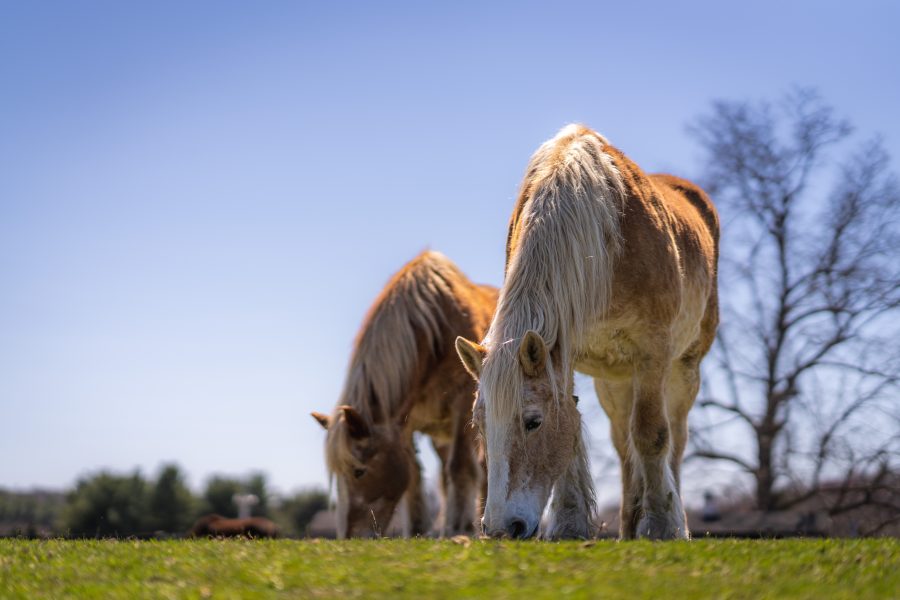At Equine Advocates, we consider all our equine residents and human staff one big family. However, some of our horses are actually related, and we love knowing they’re in the same safe home. In recognition of Mother’s Day, we want to share their stories and some fun facts about mares and offspring.

Peggy and Melanie
Peggy, a Belgian Draft born around 1996, is a former PMU (Pregnant Mares’ Urine) Mare who was part of a major rescue operation of 46 Canadian PMU mares that Equine Advocates saved in Manitoba between October 2003 and March 2004. Peggy was in foal at the time of her rescue in 2004. She arrived at the sanctuary in the spring of that year and gave birth to her daughter Melanie, shortly after. Peggy has a freeze brand #157 on her side, which represents the stall number at the PMU factory farm where she came from.
The majority of foals born to PMU mares are considered byproducts, and many are sent to auction and/or slaughter. Since Melanie was born at our sanctuary, she thankfully will never experience the abuse her mother and countless other horses suffered in the name of medicine. These two beautiful mares live in the same field with two other draft horses.
Annie and Connor
Annie, born around 2001, is a Belgian Draft branded with #157, the same as Peggy. She was the youngest of the 46 Canadian PMU mares we rescued in Manitoba. For that reason, she does not seem to have as many physical and emotional scars as most of the other mares rescued during those six months. She gave birth to a colt named Connor in the spring of 2004 at our sanctuary. They were adopted out, but both horses came back to us in 2008. Annie lives in the same field as Peggy and Melanie, while Connor lives with Jeffrey Mac, a Draft Cross and fellow PMU offspring.
Facts about dams and foals
- The female parent, or mother, of a foal is referred to as a “dam.”
- Mares are seasonal breeders, meaning they can be bred from late spring to early fall.
- The average gestation period for a horse is 340 days, or about 11 months. That’s two more months than humans!
- Mares typically give birth to one single foal. Twin pregnancies are rare and are very risky for the dam and offspring. It’s rare for both foals to survive.
- Most often, foals are born at night, and it happens very quickly. This is because in the wild, it protects the mare and foal from predators when they are at their most vulnerable.
- Foals can weigh up to 150 pounds at birth.
- When first born, foal hooves have a special covering called “fairy slippers,” which develop in the womb to help protect the dam’s reproductive organs and birth canal during pregnancy and birth. This covering hardens as foals start standing and walking within hours of birth.
- Colostrum, the dam’s first milk, provides foals with infection-fighting antibodies. Since foals are born without a fully developed immune system, receiving the colostrum is critical for a horse’s health and survival.
At Equine Advocates, we don’t breed our rescued equines. We do, however, feel proud to have saved dams in foal and had many equines born under our care, ensuring they’re safe from a life of abuse or mistreatment.
This story was published in Berkshire Animal World’s May 2025 issue.






